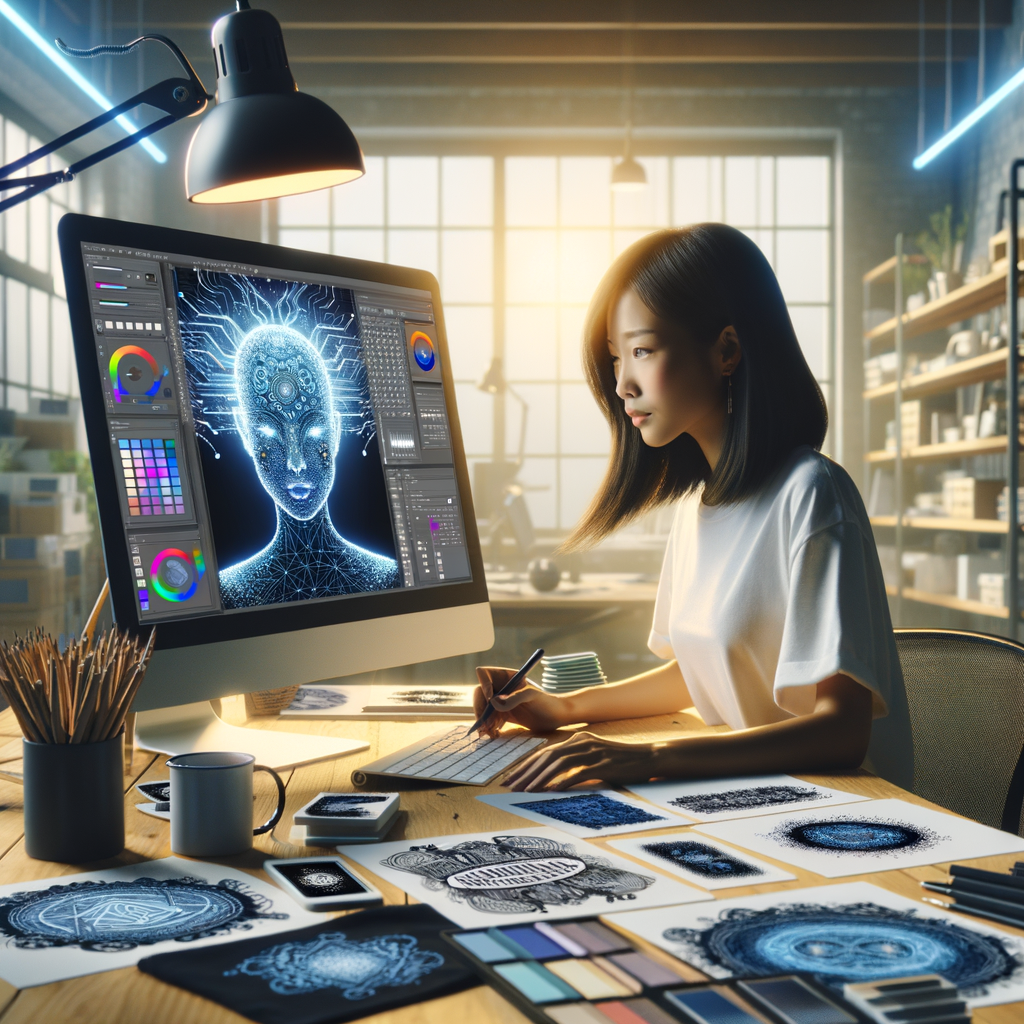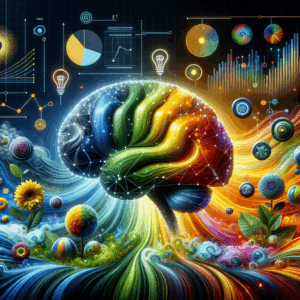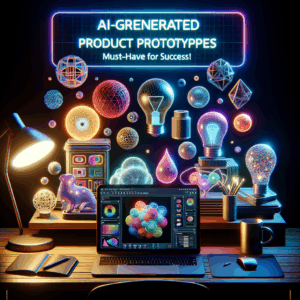
AI Transforms Custom Merchandise Design: Must-Have Insights
- The Rise of AI in Custom Merchandise Design
- Understanding AI in Design
- Benefits of AI-Powered Design Tools
- Enhanced Creativity
- Cost Efficiency
- Rapid Prototyping
- Personalization at Scale
- Customer Insights
- Automated Personalization
- AI's Impact on the Design Workflow
- Design Assistance
- Collaboration Tools
- The Role of Data in Design Decisions
- Market Trends
- Consumer Feedback
- Bridging Technology and Creativity
- The Human Element
- Continuous Learning
- Challenges in Implementing AI
- Initial Costs
- Data Privacy Concerns
- The Future of Custom Merchandise Design
- Trends to Watch
- Must-Have Insights for Brands
- FAQs
- Conclusion
- References
The Rise of AI in Custom Merchandise Design
Artificial Intelligence (AI) has started to change the way we think about various industries, and custom merchandise design is no exception. In an era where consumer preferences are shifting rapidly, businesses must stay ahead of the curve. AI transforms traditional processes, making design easier, quicker, and more aligned with customer needs. This article will explore how AI reshapes custom merchandise design and the must-have insights for businesses looking to thrive.
Understanding AI in Design
AI refers to computer systems that can perform tasks usually requiring human intelligence. This includes learning, reasoning, and problem-solving. In custom merchandise design, AI can analyze data, predict trends, and automate repetitive tasks. The technology empowers designers to focus more on creativity than logistics.
To appreciate these changes, consider traditional methods. Designers often relied on intuition and extensive market research. While these practices still hold value, they can be time-consuming. AI eliminates many of these inefficiencies. It analyzes consumer behavior and preferences, allowing brands to make informed decisions based on data.
Benefits of AI-Powered Design Tools
Using AI in custom merchandise design has numerous benefits. It enhances creativity, optimizes costs, and speeds up the design process. Let’s explore these advantages further.
Enhanced Creativity
AI tools can generate unique design concepts by combining different visual elements. They can suggest color palettes, layouts, and even themes based on current trends. Designers can use these recommendations as inspiration or even as starting points for their projects. With AI handling preliminary tasks, designers can explore more creative avenues without getting bogged down by logistics.
Cost Efficiency
Cost management is critical in any business. AI design tools can lower costs significantly. They can automate tasks like pattern creation, allowing teams to produce more designs in less time. Consequently, businesses save on labor costs while increasing output.
In addition, predictive analytics help brands avoid overproduction. By understanding market demand through AI, companies can produce only what’s needed, reducing waste and maximizing profit margins.
Rapid Prototyping
Speed is everything in today’s fast-paced market. AI accelerates the design process by enabling rapid prototyping. Designers can quickly produce samples and make adjustments based on consumer feedback. This swift turnaround allows brands to be agile, responding to market changes almost in real-time.
Personalization at Scale
One of the standout features of using AI is its ability to personalize designs on a large scale. In the age of mass personalization, customers expect tailored products that meet their individual needs.
Customer Insights
AI can analyze customer data to identify preferences and trends. By understanding the demographics, likes, and shopping behaviors of their target audience, brands can create customized merchandise that resonates deeply with consumers.
For instance, if a brand notices growing interest in eco-friendly materials, it can quickly pivot its merchandise line to offer sustainable options. This level of responsiveness enhances customer satisfaction and loyalty.
Automated Personalization
Tools using AI can also automatically customize merchandise. For example, companies can employ AI software to create personalized t-shirts that incorporate a customer’s name or favorite colors. This not only meets customer demand but also increases the likelihood of purchase.
AI’s Impact on the Design Workflow
Integrating AI into the design workflow streamlines processes significantly. Let’s break down how this transformation occurs.
Design Assistance
AI design assistants help streamline workflow by suggesting design elements based on initial inputs. This reduces the time designers spend searching for inspiration. In many cases, AI can even create a preliminary design, which human designers can refine further.
Collaboration Tools
Collaboration is another area where AI shines. Many AI-powered platforms enable teams to share ideas seamlessly. These tools promote real-time feedback and encourage brainstorming, allowing for a more cohesive final product.
Moreover, many platforms include AI-driven chatbots that assist in communication. These bots can manage schedules, share files, or answer common queries, allowing designers and clients to focus on the creative aspects.
The Role of Data in Design Decisions
In the digital age, data is a valuable resource. The insights gathered can help shape design decisions in remarkable ways.
Market Trends
AI analyzes vast amounts of data to uncover emerging trends. This capability allows brands to stay ahead of what’s popular before it becomes mainstream. By leveraging data analytics, companies can make proactive design choices, ensuring their merchandise stays relevant.
Consumer Feedback
AI also plays a crucial role in collecting and interpreting consumer feedback. Brands can quickly gauge reactions to designs through surveys or social media metrics. This feedback loop helps refine offerings and ensures that brands stay in sync with their audience’s preferences.
Bridging Technology and Creativity
While AI automates many tasks, it does not replace the human touch in design. In fact, successful integration of AI promotes a more collaborative relationship between technology and creativity.
The Human Element
Design is about more than just aesthetics; it’s about storytelling. Human designers understand cultural nuances, emotional connections, and the artistry involved in creating meaningful merchandise.
AI complements this human element by providing the tools necessary to enhance creativity. Ultimately, the best designs come from a harmonious fusion of human creativity and AI efficiency.
Continuous Learning
Another advantage of AI is its capacity for continuous learning. As consumer preferences change, AI algorithms adapt accordingly. Over time, these systems become more accurate, offering increasingly tailored suggestions for designers. This leads to more effective designs and satisfied customers.
Challenges in Implementing AI
While AI offers numerous benefits, it’s vital to acknowledge the challenges involved in its implementation.
Initial Costs
Investing in AI technology can be expensive for smaller brands. The initial setup, software costs, and possible training expenses can add up quickly. However, the long-term savings and increased productivity often justify these upfront investments.
Data Privacy Concerns
As brands collect and analyze more consumer data, they must address privacy concerns. Building trust requires transparency about data usage. Brands should adhere to regulations and best practices to protect consumer information while still gaining valuable insights.
The Future of Custom Merchandise Design
The landscape of custom merchandise design will continue to evolve with AI. As technology advances, brands that embrace these changes will likely emerge as leaders in the market.
Trends to Watch
1. Greater Automation: The trend toward automation will likely deepen. More processes will become AI-driven, further streamlining design workflows.
2. Augmented Reality (AR): AI’s integration with AR opens new pathways for customer engagement. Brands can offer virtual try-ons, making the shopping experience more immersive.
3. Sustainability: With growing consumer concern for the environment, design processes will likely prioritize sustainability. AI can assist in sourcing sustainable materials and optimizing environmentally friendly production methods.
Must-Have Insights for Brands
To successfully leverage AI in custom merchandise design, brands should consider the following insights:
1. Invest in Training: Equip your team with the necessary skills to use AI tools effectively.
2. Focus on Data Integrity: Ensure the data you collect is accurate and ethically sourced.
3. Engage Your Audience: Actively seek feedback from customers to inform design decisions.
4. Combine Forces: Encourage collaboration between AI systems and human designers for optimal results.
5. Keep Up with Trends: Regularly monitor market trends and technological advancements to stay competitive.
FAQs
1. What types of businesses can benefit from AI in merchandise design?
Any business involved in custom merchandise, from apparel to home goods, can benefit from AI.
2. How expensive is it to implement AI in my business?
Costs can vary significantly based on the tools you choose and your specific needs, but most initial investments show returns over time.
3. Can small businesses afford AI technology?
Yes, many affordable AI solutions cater to small businesses. It’s about finding the right fit for your needs.
4. Do I need to be tech-savvy to use AI design tools?
While some familiarity with technology helps, many tools feature user-friendly interfaces designed for all skill levels.
5. What are the potential drawbacks of using AI in design?
Initial costs and data privacy concerns are primary drawbacks. However, many brands find that the benefits outweigh these challenges.
6. How does AI improve personalization?
AI analyzes customer data to deliver tailored recommendations, ensuring products meet individual preferences.
7. Is human creativity still necessary in AI-powered design?
Absolutely! While AI enhances efficiency, human creativity adds context and depth to designs.
8. How can I ensure my data privacy while using AI?
Adhere to privacy regulations and be transparent about how you collect and use customer data.
9. Will AI eventually replace designers?
Unlikely. AI will augment the design process, allowing human designers to focus on creativity while taking care of technical tasks.
10. What’s the future of AI in custom merchandise design?
Expect more automation, advanced consumer engagement tools like AR, and a focus on sustainability in designs.
Conclusion
AI is transforming the landscape of custom merchandise design in remarkable ways. From enhancing creativity to speeding up the design process, the technology empowers brands to meet customer needs efficiently. By embracing these changes while acknowledging the human element, businesses can thrive in this rapidly evolving landscape. As trends continue to shift, staying informed and agile will be crucial for success.
References
1. How AI is Shaping the Future of Custom Merchandise Design
2. Understanding the Impact of AI on Design
3. Exploring Trends in AI for Custom Design
4. The Business Case for Using AI in Merchandise
5. Maximizing ROI with AI Tools

